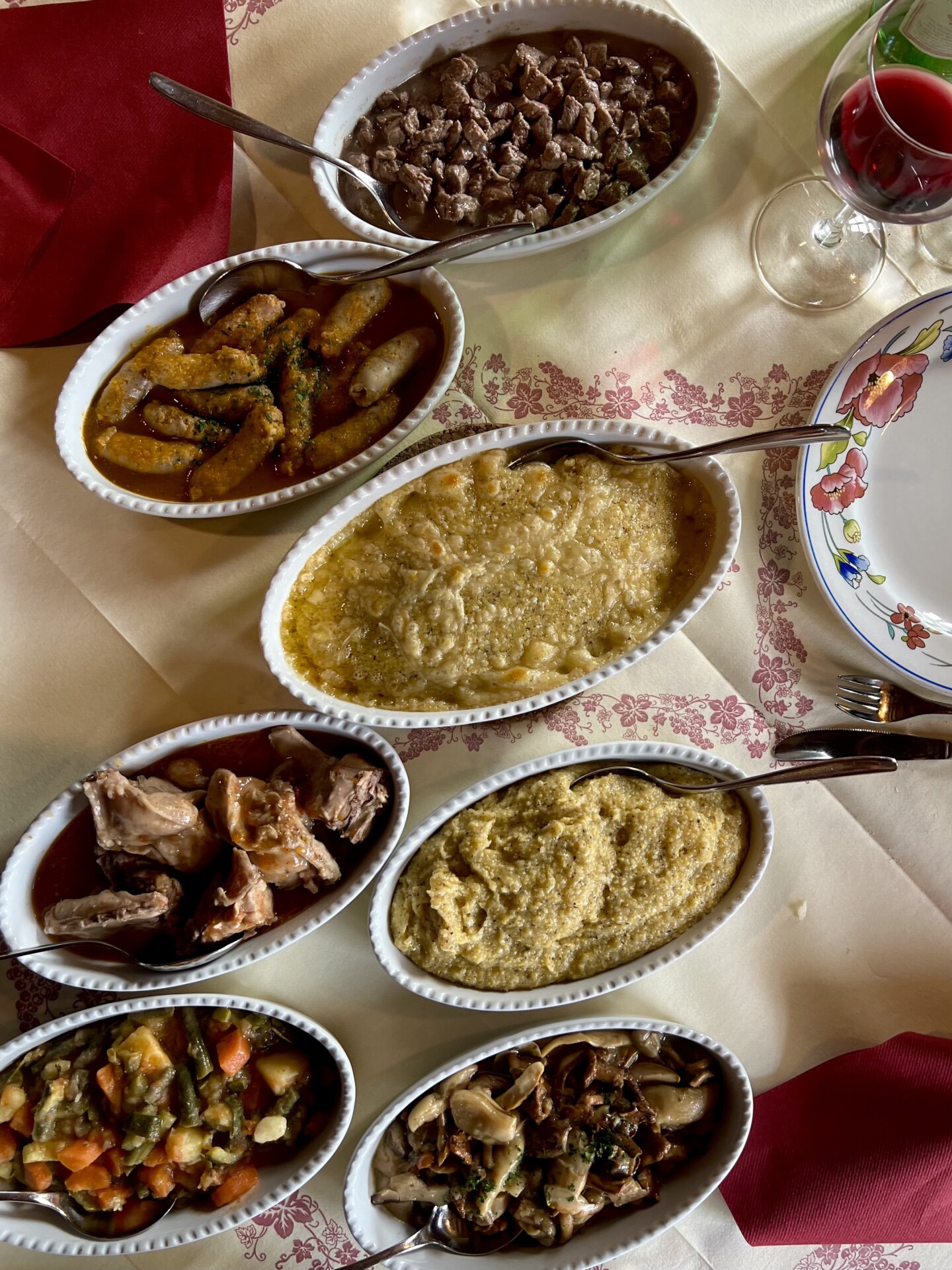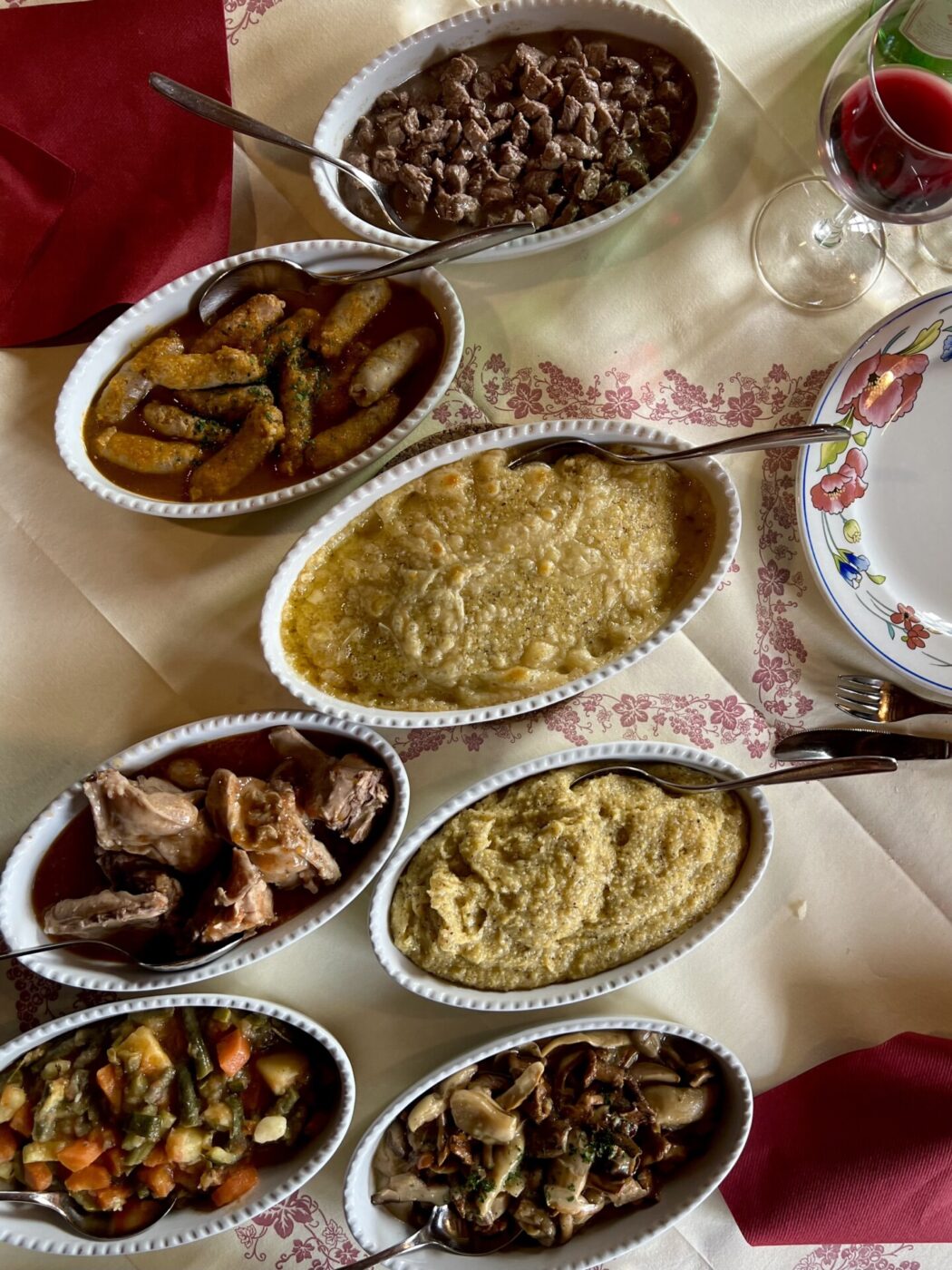The key to this cucina povera staple, as any Italian nonna will resolutely confirm, is in the cooking–or better yet, in the stirring. The longer the stir and the more vigorous the hand, the better. As this starchy staple takes a good hour on the hob (note to boycott the instant variety), you may want to skip the gym and reserve your energy for a hardcore arm workout on polenta days.
Once the hour is up, the fun begins. Bowl it up and top with a dollop of butter and a handsome handful of Parmigiano–simple perfection. Or get creative with toppings and do as the Italians do: porcini mushrooms, sausage, al sugo (in sauce), or whipped cod (baccalà mantecato) are to name just a few! If you can’t wait for dinner and crave just a nibble, spread a thin layer on a wooden board and leave to set. Cut into slices, griddle over a medium flame, and serve the bite-sized snacks, topped up, for all to enjoy.
Although many recipes call for certain tweaks (some suggest stock, others say milk or cream) the original recipe below stands strong and steady in Lombardian tradition.
POLENTA
Serves 6 | Cooking Time: 1 Hour
INGREDIENTS
- 2 liters of water
- 1 tablespoon salt
- A generous glug of extra virgin olive oil
- Medium or coarsely ground cornmeal: 600g for a thick consistency, 500g for a softer consistency, or 400g for a very soft consistency
PREPARATION
- Bring water to a boil.
- Add in the salt, pour in the cornmeal, then the oil, and stir until the mixture thickens, about 2 to 3 minutes. Cook for about an hour–or until desired consistency has been achieved–stirring vigorously about every 10 minutes or so. (If the polenta becomes too thick, you can always loosen it up with a bit of water.)
- Serve warm.

